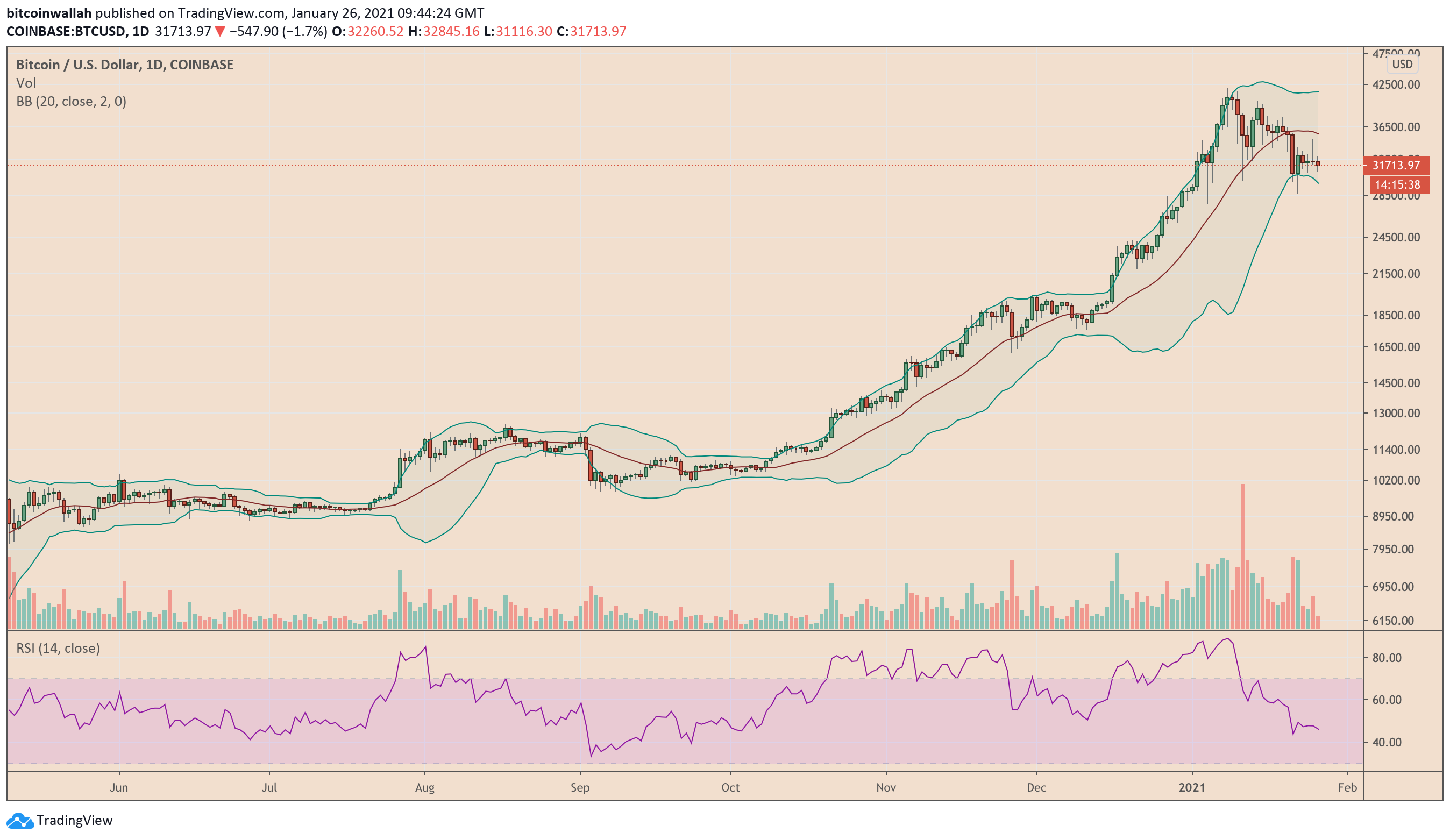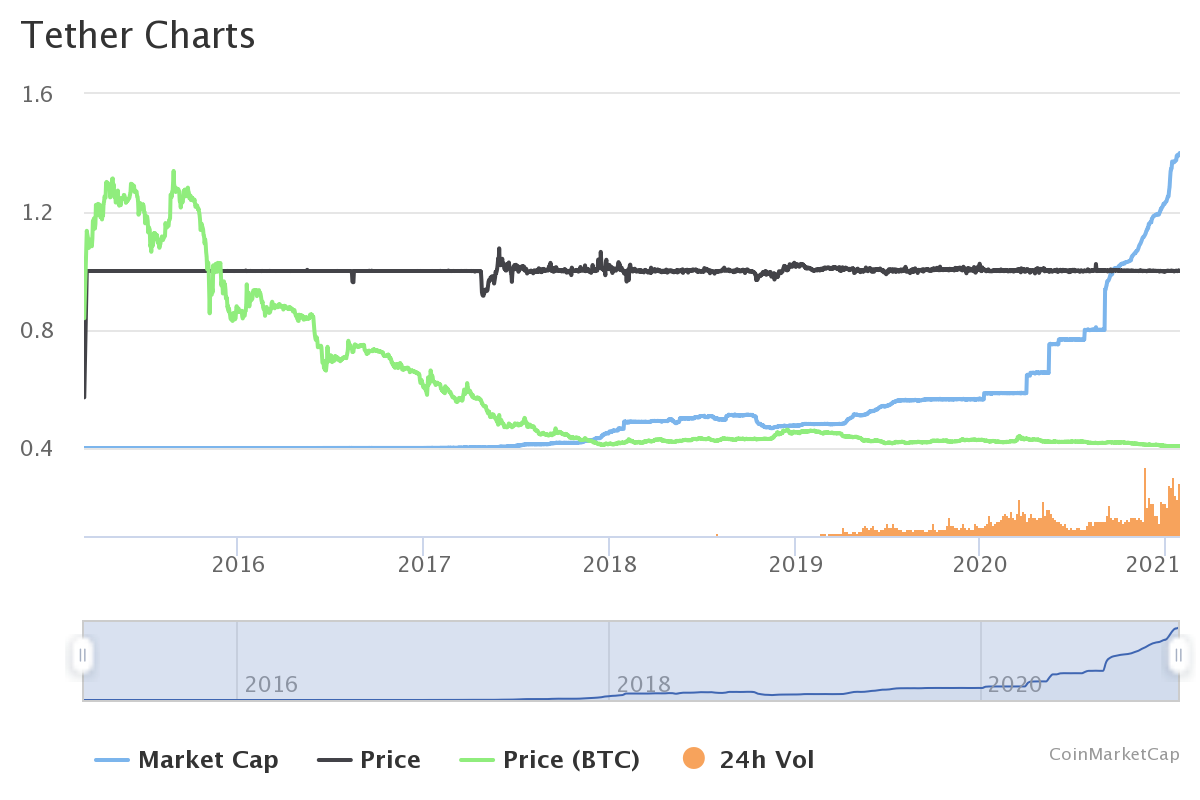March Crisis
JPMorgan took the discussion back to March 2020’s global market rout, wherein liquidity shrank dramatically in the LIBOR, repurchase agreement, short-term commercial paper, and other large-volume money markets. The US dollar’s purchasing power soared, leaving even the safest of all US Treasuries in a critical condition.
It was not until the Federal Reserve decided to step in with its quantitative easing program that the global market recovered, taking the flagship cryptocurrency upward in tandem. The US central bank’s decision to slash interest rates to almost zero and buy government and corporate debts indefinitely prompted a lengthy bull cycle across stocks, bonds, gold, and even Bitcoin markets.

Bitcoin reached its record high near $42,000 in January 2021. Source:The cryptocurrency has now rebounded by more than 700 percent from its mid-March nadir of $3,858. Nevertheless, its potential to pare those gains is higher as long as the global market anticipates a March-like liquidity crisis. Moreover, according to JPMorgan analysts, Bitcoin’s biggest liquidity risks come from within the cryptocurrency industry.
“Tether Ltd claims reserve assets of cash and equivalents equal to their outstanding liabilities, but has famously not produced an independent audit and has claimed in court filings that they need not mention full backings,” the JPMorgan note reads.
Risks to Bitcoin Bulls
According to data fetched by CoinMarketCap, Tether has a circulating supply of $25.52 billion, up more than 500 percent from its January 1, 2020’s market cap open of $4.096 billion. Its parent company iFinex, which also owns popular trading platform BitFinex, faces allegations of losing $850 million worth of its client funds to an entity allegedly based in Panama.

Tether's market capitalization crosses the $25 billion mark. Source:
The New York attorney general’s filings against iFinex states that BitFinex “faced extreme difficulty honoring its clients’ requests to withdraw their money from the trading platform” in 2018. In October 2018, the USDT stablecoin had lost its 1:1 peg to the US dollar, falling to as low as $0.86. Two months later, Bitcoin established its yearly low near $3,200.












